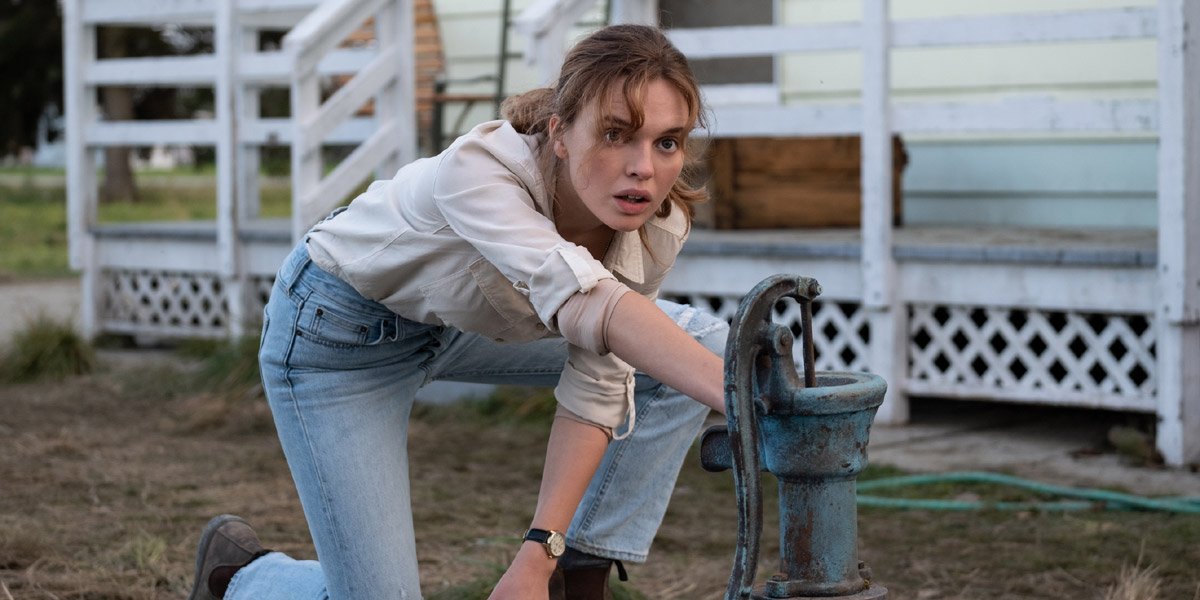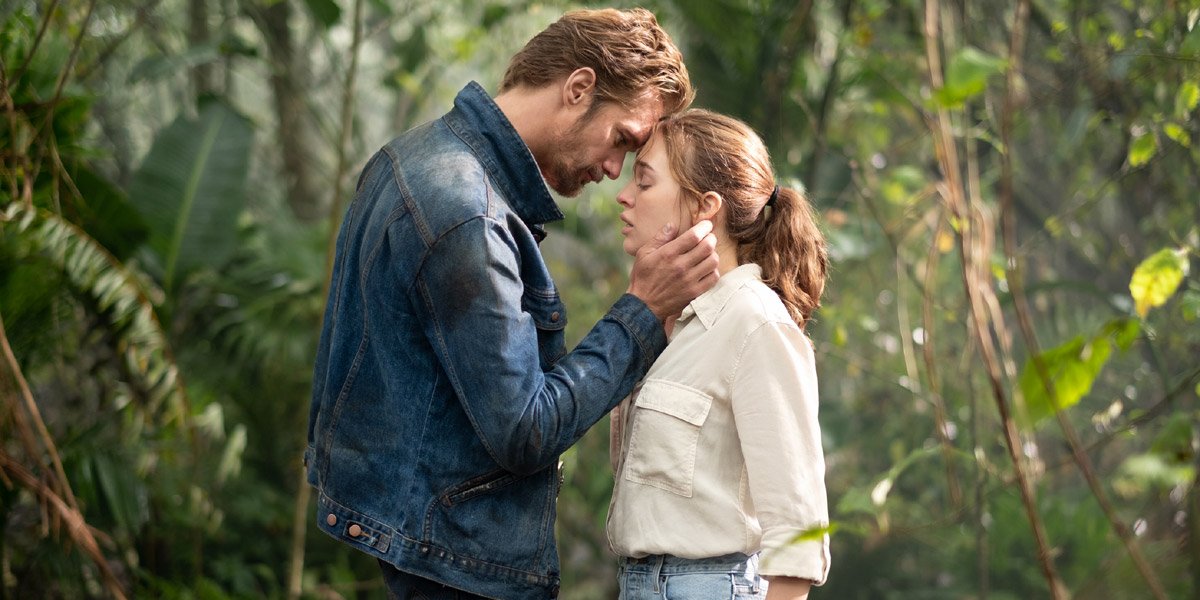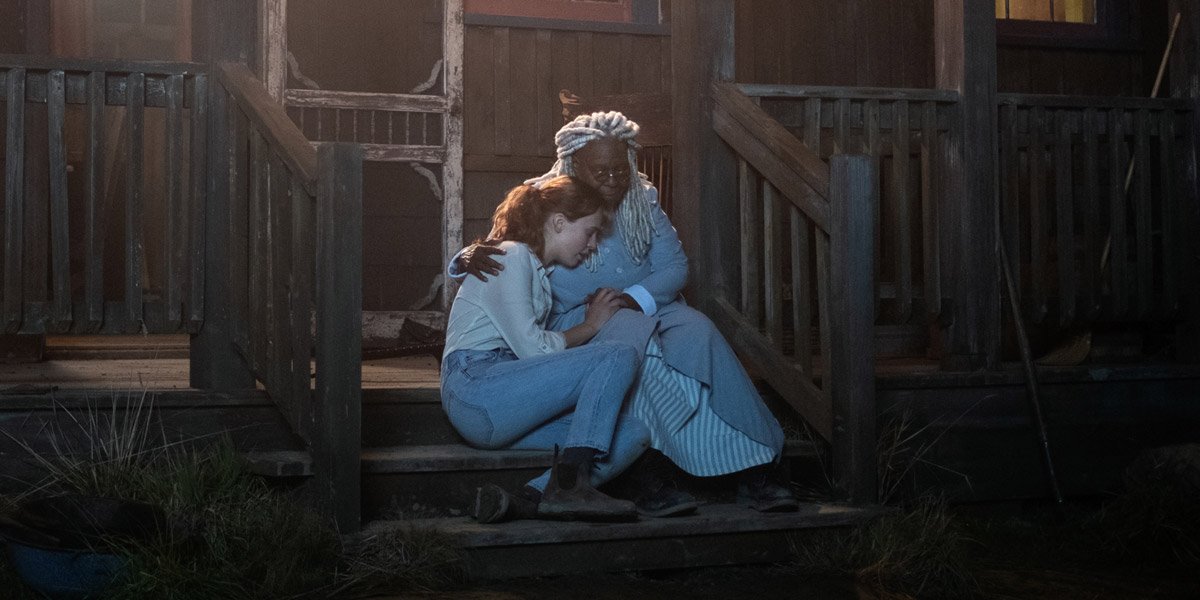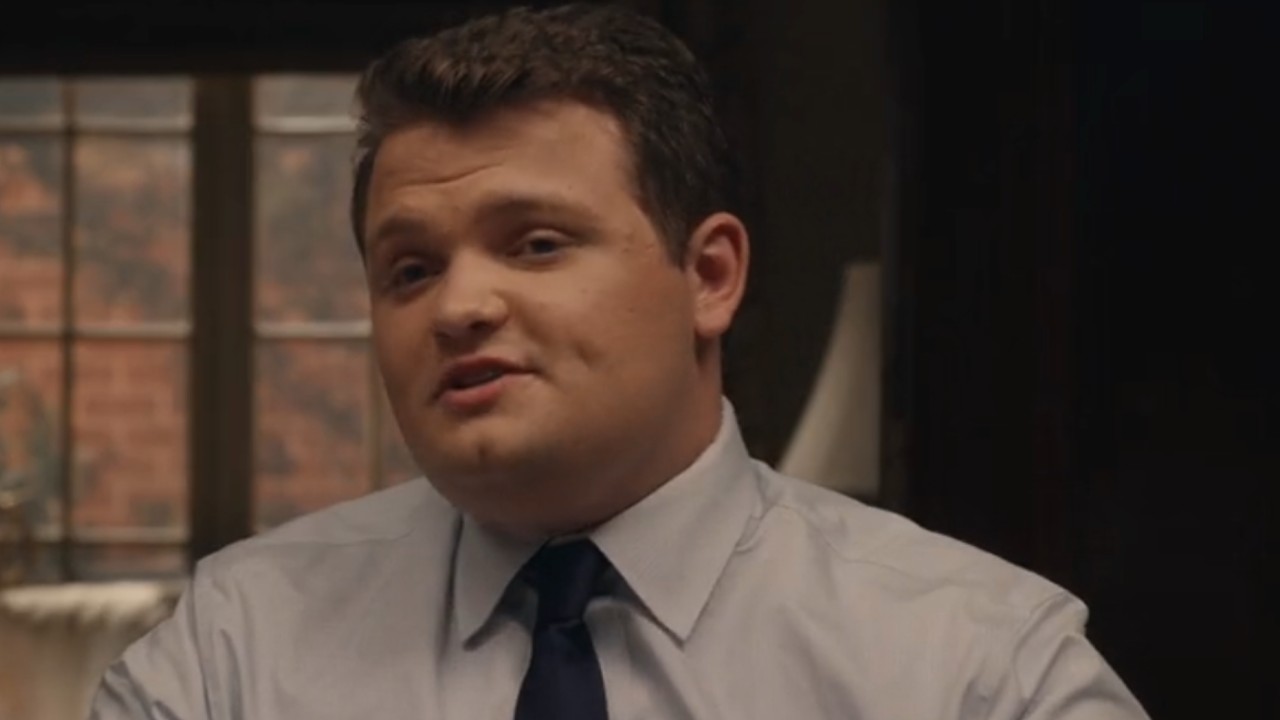The Stand: How Stephen King’s New Ending In The Miniseries Adds To The Book

Anticipation for a new adaptation of Stephen King’s The Stand was boiling for many years before the CBS All Access take really got into gear, but that excitement hit extreme new levels in August 2019. On the first day of that month, King himself announced that he had completed writing the final episode of the new miniseries, revealing while doing so that it would provide a new ending to the story beyond what’s featured in the book. Constant Readers have been desperately curious about this so-called “coda” ever since – but now the wait is over, as the finale is now available.
As teased back in December, the final episode primarily focuses on Odessa Young’s Fran Goldsmith, who doesn’t have the opportunity to partake in the stand against Randall Flagg in New Vegas due to her pregnancy. “The Circle Closes” primarily exists to allow the young woman from Maine to have her own moment of moral struggle and resilience, and gives her the opportunity via a horrible accident involving an old, abandoned well. It’s an interesting story that adds a particular extra depth to its central character, and as a way of capping off my week-to-week run of articles comparing The Stand adaptation to the book let’s do a deep dive into what happens, what it means, and overall thoughts.

What Happens In “The Circle Closes”
In its first 15 minutes, the finale of The Stand sticks close to the events that play out in the source material. While Stu Redman is still making his way back to the Boulder Free Zone from his trek to New Vegas, Fran Goldsmith gives birth to the child that she has been carrying since the start of the story. At first it looks like the baby is going to not have her mother’s immunity, as she shows very clear symptoms of Captain Trips, but she proves to be the first person on Earth who recovers from the virus.
And as though that news isn’t good enough, Stu then finally arrives home – aided by Tom Cullen and Kojak in his journey back to Colorado.
Once the first winter in Boulder is over, Fran confesses to Stu that she is homesick and wants to return to Maine and see the Atlantic Ocean again. Even without The Dark Man lingering it’s a dangerous proposition in the post-pandemic world, but Stu acquiesces and agrees that their little family should pick up its roots and head to New England. There are tearful goodbyes, and massive hugs from Tom, but the trio then leaves the Free Zone – and Stephen King’s creative juices get flowing.
Arriving in Lorton, Nebraska
On the road, the Redman/Goldsmith family decides to make a stop in a town called Lorton, Nebraska – finding a two story house with a massive cornfield in the backyard to stay in. Stu is disappointed that to find that the cupboards are barren of edible food, but Fran notes that they passed a supermarket and a drug store, and that it would be good for them to stock up on supplies, especially medicine for the baby. They make the decision to stay overnight, but what they don’t know is that they have a mysterious neighbor – namely an innocent-looking girl who seems to live among the stalks of corn.
Your Daily Blend of Entertainment News
The next day Stu takes the truck out to run errands (getting delayed on his way back due to a flat tire), and Fran stays behind looking out for her daughter and Kojak. Spotting a well in the backyard, she wonders whether or not it works, and tests the pump – assuring her dog that she is being careful. What she doesn’t account for, unfortunately, is Randall Flagg whispering in her ear and an aggressive rat taking a bite at her finger.
Fran’s quick reaction causes the wood boards supporting her over the well to snap, and she tumbles down to the bottom, hitting her head and getting knocked unconscious.
Fran Goldsmith vs. Randall Flagg
While Fran’s body lies still in her well, her mind finds her in a strange jungle face-to-face with the notorious Walkin Dude. In calm and simple terms he explains to her the bind she is in, illustrating with the help of his own magic well. The injuries she has sustained from her fall are potentially deadly, and her baby is all alone on the back porch of a strange house in Nebraska. Meanwhile, Stu is trying to jack up his car to fix his tire, and working on unstable ground that threatens the possibility of him being crushed. Flagg paints a picture of doom, but explains that he is in a healing mood.
In exchange for saving Fran’s life, her baby’s life, and sparing Stu, all she has to do is give him a kiss and occasionally allow him to possess her. It’s an offer that she initially refuses, arguing that it’s all a lie, but she he assures her that everything he’s saying is true. For a moment it looks like Fran is going to make the trade, but instead she takes a chunk out of his bottom lip with her teeth and flees.
Running away, she suddenly finds herself out of the jungle and instead in a familiar cornfield: the one at Mother Abigail’s house in Hemingford Home. Lo and behold, Fran finds the woman who called her to Boulder, Colorado sitting on her porch, and the young mother laments almost giving into Randall Flagg’s offer. Assuring her, the great representation of Good in The Stand tells Fran that she is destined to live a long life, bearing five children and ultimately 70 great-grandchildren.
Fran’s Rescue
When Stu finally arrives back at the house, he quickly finds what has happened to Fran, and is surprised to discover that he has help to save his love – namely the girl who lives in the cornfield. The man from East Texas wraps his truck’s tow cable around his waist and drops into the well while his enigmatic assistant controls the cable’s feed from the driver’s seat. When he gets down to the bottom, he is able to wake Fran up, and together they are winched back up.
With no doctor around, things seem extremely dire, but that’s only because Stu and Fran don’t know the extent of the girl’s powers. Hands are passed over Fran’s injuries and they are magically healed. The stranger whispers two words into Fran’s ear – “now stand” – and when she does the miraculous helper is gone (the ultimate impression from her presence being that she is a young Mother Abigail).
One week later, Fran and Stu are together in Ogunquit, Maine overlooking the Atlantic Ocean. Finally discussing what happened in Nebraska, Fran says that she was confronted with two sides of the world, and that “the wheel turns, the struggle continues, and the command is always the same… Be true. Stand.”
Meanwhile, in the jungle Randall Flagg is back in recruiting mode. Approaching a tribe of natives nude with the exception of his boots, he presents no threat, but a scared archer fires an arrow at him. Flagg makes the archer’s face explode, and this show of power is enough to cause the others to bow at his feet. Floating in the air, Flagg reintroduces himself as Russell Faraday, and demands worship.
With “The Circle Closes,” Stephen King has essentially written a whole new last chapter of The Stand. But while it’s certainly a natural continuation of the story and primarily built on a new mini-narrative, it’s also interesting that it still changes certain elements from the author’s original text.

How The Stand Miniseries Ending Differs From The Book
As noted, the first act in the Stand finale is mostly a straight adaptation of the events that transpire in the final pages of Stephen King’s book, but there are some alterations made that are worth spotlighting. For starters there is the fact that the audience doesn’t actually see any of Stu’s return trip to Boulder, as we are instead left to experience it as a surprise from Fran’s point of view. It’s additionally noteworthy that the gender of the baby has changed as well. As originally written, Fran gives birth do a boy that she names Peter after her father; in the CBS All Access miniseries she has a daughter that she names Abigail (obviously after Mother Abigail Freemantle).
Basically everything that happens after Fran and Stu’s decision to leave the Boulder Free Zone is new material that Stephen King has been thinking about for the last 30 years, but it should also be recognized that the final scene is also adapted material – and also features deviations from the source material. For starters, Flagg doesn’t present himself totally naked (he’s wearing jeans in addition to his boots), and he doesn’t actually need to put on a violent display in order to captivate the inhabitants of the jungle – he merely has to flash a smile. Those are really just details, though, as the larger impact remains the same.
What’s far more significant is the way in which the new coda by Stephen King fits in with the rest of the story told – especially in the context of the miniseries it concludes…

Is It A Fitting Ending For The Stand?
There has long been a living document aspect to Stephen King’s The Stand, as it’s a story that hasn’t remained the same since the book was first published on October 3, 1978. In 1990 approximately 400 pages were reintroduced to the tome, which was republished as the “Complete and Uncut Edition,” and the author himself previously adapted the material, writing the screenplay for the four-episode 1994 miniseries. As a result, the newly written coda feels like a fitting part of the epic’s ever-expanding legacy, and what’s far more important is that the extra “chapter” adds real value to the tale.
In reflection, it’s an unfortunate thing that Fran Goldsmith is such a vital figure in The Stand, and yet doesn’t have the opportunity to be an active part of the titular event due to her pregnancy. Her final arc in the book is largely defined by her concern for Stu and her fear that her baby won’t survive, and that’s rather passive material for such an important character. “The Circle Closes” primarily functions to give Fran the conflict and closure that she deserves, and its developments are faithful to her arc without feeling tacked on. If Stephen King were to write it into new versions of the novel published in the future, it would be recognized as an organic extension of what has existed for decades.
How it exists in the context of the CBS All Access miniseries is a different conversation – and that’s primarily due to the pacing of everything we’ve seen over the last nine weeks. With a hell of a lot of ground to cover, The Stand has been moving at a whip-crack pace from the very beginning – pushed in a big way by the non-linear structure in the first few episodes that abbreviated the arcs of all the main players. Up until this week the show hasn’t taken much time to slow down and really examine its characters, which is exactly what Stephen King’s coda does for Fran. In that way it feels distinct compared to the rest of the adaptation, and while that’s a bit odd, it’s not entirely a bad thing given the historical significance of the original author adding to his original work more than 40 years after its original publication.
With the miniseries now concluded, it can be said definitively that the 2020/2021 iteration of The Stand has had a lot of ups and downs – but Stephen King’s finale is a clear “up.” Not every change that has been made to the source material has been a welcomed one (I will remain forever disappointed by Trashcan Man’s severely condensed role), but what King delivers is an exciting and significant addendum that cuts to the guts and bathes in the story’s most important themes. Justice has been done to Fran Goldsmith, and it will be remembered as the best part of this adaptation.









Eric Eisenberg is the Assistant Managing Editor at CinemaBlend. After graduating Boston University and earning a bachelor’s degree in journalism, he took a part-time job as a staff writer for CinemaBlend, and after six months was offered the opportunity to move to Los Angeles and take on a newly created West Coast Editor position. Over a decade later, he's continuing to advance his interests and expertise. In addition to conducting filmmaker interviews and contributing to the news and feature content of the site, Eric also oversees the Movie Reviews section, writes the the weekend box office report (published Sundays), and is the site's resident Stephen King expert. He has two King-related columns.
